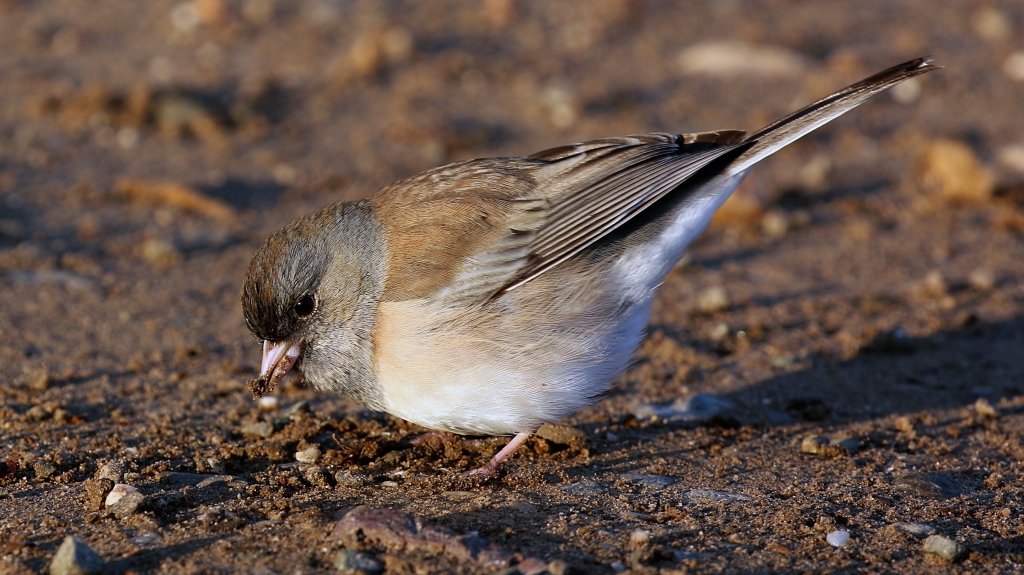By Jim Acquire

Be taught 100 Frequent Valley Birds is a photograph weblog sequence highlighting the 100 most typical Valley chook species.
Submit #5 within the Be taught 100 Frequent Valley Birds sequence. (Species 9/100.)
About Juncos
The Darkish-eyed Junco is a Frequent Winter Customer to California’s Central Valley and might be discovered in lots of habitats. There are 2 species of Junco within the US, the Darkish-eyed Junco and the Yellow-eyed Junco. Nevertheless, the Yellow-eyed Junco is simply present in SE Arizona and isn’t going to be discovered within the Central Valley. Take a look at the comparability between the 2 species beneath.


The Darkish-eyed Junco is a small, sparrow-sized chook that’s in reality, a member of the sparrow household (Passerellidae). Juncos are granivorous (seed-eating) ground-dwelling birds which are virtually all the time present in small flocks.

Whereas it’s usually present in shut proximity to White-crowned and Golden-crowned Sparrows at yard feeders, it’s truly extra carefully associated to the extra secretive Fox Sparrow.



Darkish-eyed Juncos are generally known as habitat generalists. Within the area of ecology, classifying a species as a generalist or a specialist is a approach to determine what sorts of meals and habitat sources it depends on to outlive. Generalists can eat quite a lot of meals and thrive in a variety of habitats. Specialists, then again, have a restricted food plan and stricter habitat necessities. (Nationwide Geographic Useful resource Library)

Look
Whereas there are a number of completely different varieties (sub-species) of Darkish-eyed Junco within the US, the shape generally known as the Oregon Darkish-eyed Junco is our most typical kind. The grownup male “Oregon” Darkish-eyed Junco is definitely recognized by its all-dark head and brown again, pale invoice, white stomach and white outer-tail feathers. The white outer tail feathers flash distinctively in flight and whereas hopping on the bottom.

The feminine and 1st 12 months male “Oregon” Darkish-eyed Juncos sport a extra medium to gentle grey head, however in any other case look the identical.

OTHER JUNCOS
A number of the different varieties (sub-species) of Darkish-eyed Junco that will seem from time-to-time within the Central Valley embrace the curious all grey with a white stomach Slate-colored Junco or the reddish-backed Grey-headed Junco. In SE Arizona there’s a utterly completely different species known as the Yellow-eyed Junco that appears like a Grey-headed, however with yellow eyes.



Earlier posts from the Be taught 100 Frequent Valley Birds sequence,

